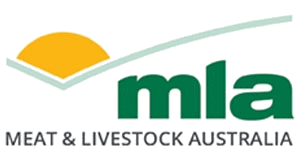Subscribe to R&D Round-Up newsletter
Stay informed with a short, sharp monthly summary of MLA’s latest research reports.
Subscribe to R&D Round-Up newsletter
Stay informed with a short, sharp monthly summary of MLA’s latest research reports.
Livestock Data Link
Livestock Data Link (LDL) is an online application that facilitates improved information sharing in the supply chain. LDL enables feedback to be received, analysed, and compared to other results in an efficient way. Your consignment performance can also be linked to supporting materials to help to understand what management practices could be considered to improve performance. The overall objective of LDL is to assist in optimising supply chain performance through turning complex information into simple decision making through analysis and reporting.
LDL currently offers two modules:
- carcase compliance – users can analyse carcase performance in terms of compliance to the grid they consigned against, with performance outcomes linked to a library of solutions on how to address non-compliant issues on farm.
- animal health information – users can view any animal health conditions that were identified as part of post-mortem inspection. Please note the current functionality relates only to sheep health data collected through the National Sheep Health Monitoring Project.
Watch this video for an overview of Livestock Data link
Why Livestock Data Link?
Non-compliance with market specifications costs the beef industry an estimated $127-$163 million per annum, according to research conducted by MLA across four key markets. This includes value lost due to:
- downgrades (discounts) for out of specification carcases ($51 million per annum)
- carcase condemns ($64 million per annum)
- loss of meat and offal value due to animal health and disease ($12 – 49 million per annum).
The Australian lamb industry has a potential cost of non-compliance to market specification in an excess of $8.4 million per annum across two major markets based on research conducted by MLA.
In addition, a GHD report (2009) looking at the costs and benefits of E-Surveillance in the small stock (sheep, lambs, and goats) industry estimated that over $110 million is lost annually on 10 diseases/conditions. This equates to an average annual cost of just over $11 million per disease. The burden of cost varies by disease/condition, but overall the on-farm sector bears 86% of the cost.
Key benefits for industry and individual enterprises
- Improved supply chain performance enabled by enhanced information flow relating to carcase performance and animal health post slaughter
- Centralised information depository with a multitude of information in the one spot e.g. MSA, NLIS, carcase compliance data, animal health (where applicable)
- Performance benchmarking at an enterprise, regional, state or national level
- Tailored research, development and extension activities for supply chains and geographic areas facing particular carcase performance or animal health issues.


